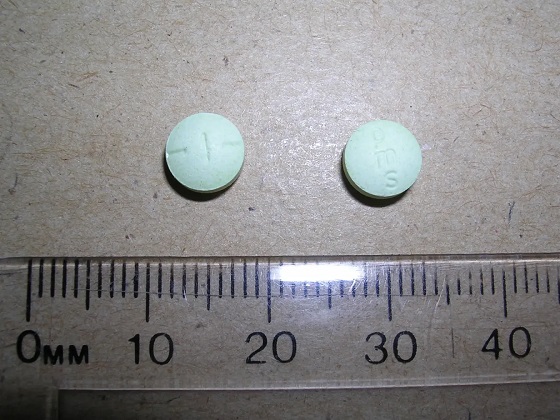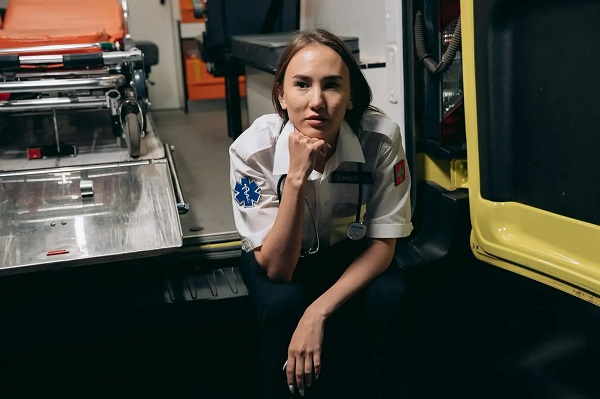Energy
The sudden, newfound support for LNG projects in Canada is truly remarkable.

From Resource Works
The sudden, newfound support for LNG projects in Canada is truly remarkable.
What’s all this? Green-leaning governments, federal and provincial, suddenly speaking in favour of liquefied natural gas (LNG) and other resource development?
It began with British Columbia Premier David Eby telling Bloomberg News that he’s optimistic that LNG Canada’s LNG-for-export plant at Kitimat, BC can be expanded in a way that satisfies its investors but without supercharging the province’s emissions.
This came as LNG Canada was reported continuing to look into possible Phase Two expansion. Such expansion would double the plant’s output of LNG to 14 million tonnes a year.
Industry reports say LNG Canada has been discussing with prime contractors their potential availability down the road. A key, though, is whether and how B.C. can provide enough electrical power.
The LNG Canada plant now is going through a pre-production testing program, and has finished welding on its first “train” (production line). LNG Canada is expected to go into full operation in mid-2025. And Malaysia’s Petronas (a 25% partner) has added three new LNG carriers to its fleet, to gear up for LNG Canada’s launch.
The Eby story noted that he has also thrown his support behind other projects — including hydrogen production and an electric-vehicle battery recycling plant — to create jobs and keep B.C.’s economy growing at a challenging time.
Then came Ottawa’s minister of innovation, science and industry, François-Philippe Champagne, who visited the Haisla Nation in B.C. to support its Cedar LNG project with partner Pembina Pipeline Corp.
Champagne declared: “This is the kind of project we want to see, where there are all the elements supporting attracting investments in British Columbia.”
His government news release said: “This project presents an exciting opportunity for Canada, as it is expected to commercialize one of the lowest-carbon-intensity liquified natural gas (LNG) facilities in the world and represents the largest Indigenous-majority-owned infrastructure project in Canada.”
Champagne went on to tell The Terrace Standard that “We are in active conversations with Pembina and Haisla First Nations. We are saying today that we will support the project, but discussions are still ongoing.’
There had already been reports that Export Development Canada is set to lend Cedar LNG $400-$500 million.
And then came federal minister Jonathan Wilkinson, announcing to the national Energy and Mines Ministers’ Conference in Calgary that Ottawa “will get clean growth projects built faster” by streamlining regulatory processes and moving to “make good approvals faster.”
Wilkinson has long talked, too, of streamlining and speeding up approval processes for resource projects in general, especially for mining for critical minerals. “(We’re) looking at how do we optimise the regulatory and permanent processes so you can take what is a 12- to 15-year process and bring it down to maybe five.”
The Canada Energy Regulator now is inviting input on its plans to improve the efficiency and predictability of project reviews.
All this as Deloitte Canada consultants reported that “the natural gas sector is poised for significant growth, driven by ongoing LNG projects and rising demand for gas-fired electricity generation in Canada.”
And energy giant BP said that under its two new energy ‘scenarios’, world demand for LNG in 2030 grows by 30-40% above 2022 levels, then increases by more than 25% over the subsequent 20 years.
Wilkinson earned pats on the back from some provincial ministers at the Calgary conference, but Alberta’s minister of energy and minerals, Brian Jean, aired concerns over how Ottawa’s new “greenwashing” law would impact the oil and gas sector.
Under it, companies (and individuals) must prove the truth of their public statements on climate benefits of their products or programs, or face potential millions in fines. But the ground rules for this legislation have not yet been announced.
(Jean was not alone. Other critics included CEO Karen Ogen of the First Nations LNG Alliance, who said the new law “could be used as one more tool to discourage resource companies that might seek Indigenous partnerships, and to obstruct Indigenous investment in energy projects, and frustrate Indigenous benefits from resource projects.”)
Wilkinson replied that the Competition Bureau needs to provide information so people understand how the rules apply and what is actionable.
“I think once that is done, this will be, perhaps, a bit of a different conversation. I would expect that the guidance will be something like folks simply have to have a good faith basis to believe what they’re saying. And assuming that is true, I think the sector probably will calm down.”
No pats on the back for Ottawa, though, from the mining industry or the oil-and-gas sector.
Aiming to combat China’s efforts to corner the market in critical minerals, Canada is making it harder for foreign firms to take over big Canadian mining companies. Major mining shares quickly dropped in value.
And Heather Exner-Pirot of the Macdonald-Laurier Institute and special advisor to the Business Council of Canada, says: “We produced less critical minerals last year than we did in 2019. We’re producing less copper, less nickel, less platinum, less cobalt, all these things. And the investment has not picked up; in real dollars it’s almost half of what it was in 2013 . . . and the regulatory system is still a huge barrier to that development.”
On top of that, the petroleum sector has long protested that federal moves to limit oil and gas emissions will, in practice, limit production.
While governments signalled support for LNG, supporters of natural-resource development quickly sent clear messages to governments of all levels.
Calgary-based Canada Action, for one, reminded governments that the oil and gas sector is projected to generate more than in $1.1 trillion in revenue to governments from 2000 through 2032. And that the oil and gas sector supports nearly 500,000 direct and indirect jobs across the country.
Then the industry-supporting Fraser Institute pointed out that business investment in Canada’s extractive sector (mining, quarrying, and oil and gas) has declined substantially since 2014.
“In fact, adjusted for inflation, business investment in the oil and gas sector has declined 52.1 per cent since 2014, falling from $46.6 billion in 2014 to $22.3 billion in 2022. In percentage terms the decline in non-conventional oil extraction was even larger at 71.2 percent, falling from $37.3 billion in 2014 to $10.7 billion in 2022. . . .
“One of the major challenges facing Canadian prosperity are regulatory barriers, particularly in the oil and gas sector.”
Over to government, then, to reduce those barriers.
Following the recent positive moves listed above from two levels of government, there’s an obvious question: Would there happen to be federal and provincial elections in the offing?
Yes: B.C. will hold its next general election on or before October 19. And the feds go to the polls for an election on or before October 20.
Stand by for more promises.
Energy
Activists using the courts in attempt to hijack energy policy

2016 image provided by Misti Leon, left, sits with her mom, Juliana Leon. Misti Leon is suing several oil and gas companies in one of the first wrongful-death claims in the U.S. seeking to hold the fossil fuel industry accountable for its role in the changing climate.

From the Daily Caller News Foundation
By Jason Isaac
They twist yesterday’s weather into tomorrow’s crisis, peddle apocalyptic forecasts that fizzle, and swap “global warming” for “climate change” whenever the narrative demands. They sound the alarm on a so-called climate emergency — again and again.
Now, the Left has plunged to a new low: weaponizing the courts with a lawsuit in Washington State that marks a brazen, desperate escalation. This isn’t just legal maneuvering—it’s the exploitation of personal tragedy in service of an unpopular anti-energy climate crusade.
Consider the case at the center of a new legal circus: Juliana Leon, 65, tragically died of hyperthermia during a 100-mile drive in a car with broken air conditioning, as a brutal heat wave pushed temperatures to 108 degrees Fahrenheit.
Dear Readers:
As a nonprofit, we are dependent on the generosity of our readers.
Please consider making a small donation of any amount here.
Thank you!
The lawsuit leaps from this heartbreaking event to a sweeping claim: that a single hot day is the direct result of global warming.
The lawsuit preposterously links a very specific hot weather event to theorized global warming. Buckle up—their logic is about to take a wild ride.
Some activist scientists have further speculated that what may be a gradual long-term trend of slight warming thought to be both cyclical and natural, might be possibly exacerbated by the release of greenhouse gases. Some of these releases are the result of volcanic activity while some comes from human activities, including the burning of oil, natural gas and coal.
Grabbing onto that last, unproven thread, the plaintiffs have zeroed in on a handful of energy giants—BP, Chevron, Conoco, Exxon, Phillips 66, Shell, and the Olympic Pipe Company—accusing them of causing Leon’s death. Apparently, these few companies are to blame for the entire planet’s climate, while other oil giants, coal companies, and the billions of consumers who actually use these fuels get a free pass.
Meanwhile, “climate journalists” in the legacy media have ignored key details that will surely surface in court. Leon made her journey in a car with no air conditioning, despite forecasts warning of dangerous heat. She was returning from a doctor’s visit, having just been cleared to eat solid food after recent bariatric surgery.
But let’s be clear: this lawsuit isn’t about truth, justice, or even common sense. It’s lawfare, plain and simple.
Environmental extremists are using the courts to hijack national energy policy, aiming to force through a radical agenda they could never pass in Congress. A courtroom win would mean higher energy prices for everyone, the potential bankruptcy of energy companies, or their takeover by the so-called green industrial complex. For the trial lawyers, these cases are gold mines, with contingency fees that could reach hundreds of millions.
This particular lawsuit was reportedly pitched to Leon’s daughter by the left-leaning Center for Climate Integrity, a group bankrolled by billionaire British national Christopher Hohn through his Children’s Investment Fund Foundation and by the Rockefeller Foundation. It’s yet another meritless claim in the endless list of climate lawsuits that are increasingly being tossed out of courts across the country.
Earlier this year, a Pennsylvania judge threw out a climate nuisance suit against oil producers brought by Bucks County, citing lack of jurisdiction. In New York, Supreme Court Justice Anar Patel dismissed a massive climate lawsuit by New York City, pointing out the city couldn’t claim both public awareness and deception by oil companies in the same breath.
But the Washington State case goes even further, threatening to set a dangerous precedent: if it moves forward, energy companies could face limitless liability for any weather-related injury. Worse, it would give unwarranted credibility to the idea — floated by a leftwing activist before the U.S. Senate — that energy executives could be prosecuted for homicide, a notion that Republican Texas Sen. Ted Cruz rightly called “moonbeam, wacky theory.”
The courts must keep rejecting these absurd lawfare stunts. More importantly, America’s energy policy should be set by Congress—elected and accountable—not by a single judge in a municipal courtroom.
Jason Isaac is the founder and CEO of the American Energy Institute. He previously served four terms in the Texas House of Representatives.
Alberta
Temporary Alberta grid limit unlikely to dampen data centre investment, analyst says
From the Canadian Energy Centre
By Cody Ciona
‘Alberta has never seen this level and volume of load connection requests’
Billions of investment in new data centres is still expected in Alberta despite the province’s electric system operator placing a temporary limit on new large-load grid connections, said Carson Kearl, lead data centre analyst for Enverus Intelligence Research.
Kearl cited NVIDIA CEO Jensen Huang’s estimate from earlier this year that building a one-gigawatt data centre costs between US$60 billion and US$80 billion.
That implies the Alberta Electric System Operator (AESO)’s 1.2 gigawatt temporary limit would still allow for up to C$130 billion of investment.
“It’s got the potential to be extremely impactful to the Alberta power sector and economy,” Kearl said.
Importantly, data centre operators can potentially get around the temporary limit by ‘bringing their own power’ rather than drawing electricity from the existing grid.
In Alberta’s deregulated electricity market – the only one in Canada – large energy consumers like data centres can build the power supply they need by entering project agreements directly with electricity producers.
According to the AESO, there are 30 proposed data centre projects across the province.
The total requested power load for these projects is more than 16 gigawatts, roughly four gigawatts more than Alberta’s demand record in January 2024 during a severe cold snap.
For comparison, Edmonton’s load is around 1.4 gigawatts, the AESO said.
“Alberta has never seen this level and volume of load connection requests,” CEO Aaron Engen said in a statement.
“Because connecting all large loads seeking access would impair grid reliability, we established a limit that preserves system integrity while enabling timely data centre development in Alberta.”
As data centre projects come to the province, so do jobs and other economic benefits.
“You have all of the construction staff associated; electricians, engineers, plumbers, and HVAC people for all the cooling tech that are continuously working on a multi-year time horizon. In the construction phase there’s a lot of spend, and that is just generally good for the ecosystem,” said Kearl.
Investment in local power infrastructure also has long-term job implications for maintenance and upgrades, he said.
“Alberta is a really exciting place when it comes to building data centers,” said Beacon AI CEO Josh Schertzer on a recent ARC Energy Ideas podcast.
“It has really great access to natural gas, it does have some excess grid capacity that can be used in the short term, it’s got a great workforce, and it’s very business-friendly.”
The unaltered reproduction of this content is free of charge with attribution to the Canadian Energy Centre.
-

 Opinion1 day ago
Opinion1 day agoPreston Manning: Three Wise Men from the East, Again
-

 Addictions1 day ago
Addictions1 day agoWhy B.C.’s new witnessed dosing guidelines are built to fail
-

 Uncategorized2 days ago
Uncategorized2 days agoCNN’s Shock Climate Polling Data Reinforces Trump’s Energy Agenda
-

 Business1 day ago
Business1 day agoCarney Liberals quietly award Pfizer, Moderna nearly $400 million for new COVID shot contracts
-

 Business1 day ago
Business1 day agoMark Carney’s Fiscal Fantasy Will Bankrupt Canada
-

 Alberta1 day ago
Alberta1 day agoTemporary Alberta grid limit unlikely to dampen data centre investment, analyst says
-

 Energy21 hours ago
Energy21 hours agoActivists using the courts in attempt to hijack energy policy
-

 Frontier Centre for Public Policy2 days ago
Frontier Centre for Public Policy2 days agoCanada’s New Border Bill Spies On You, Not The Bad Guys






